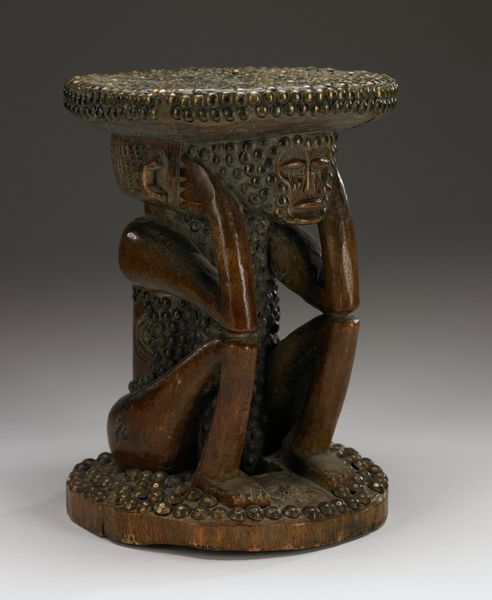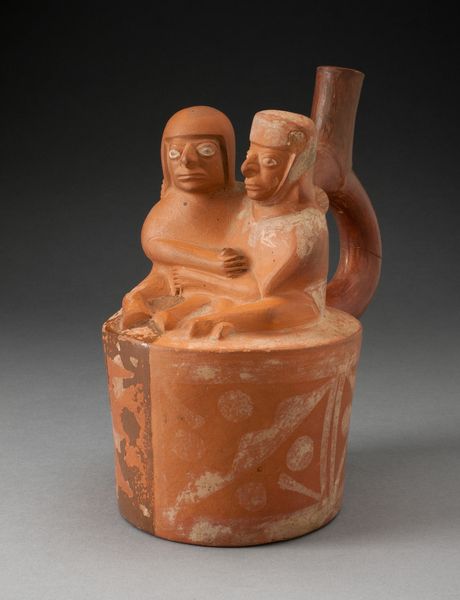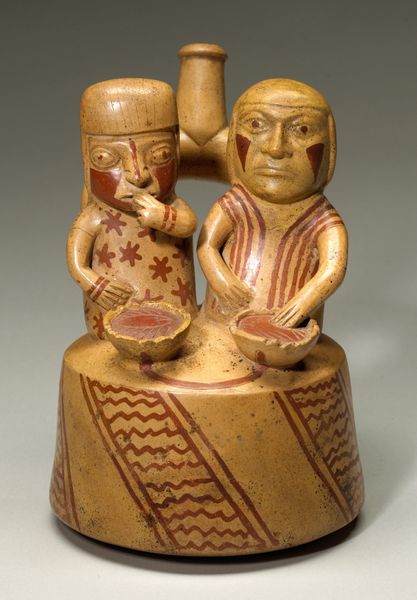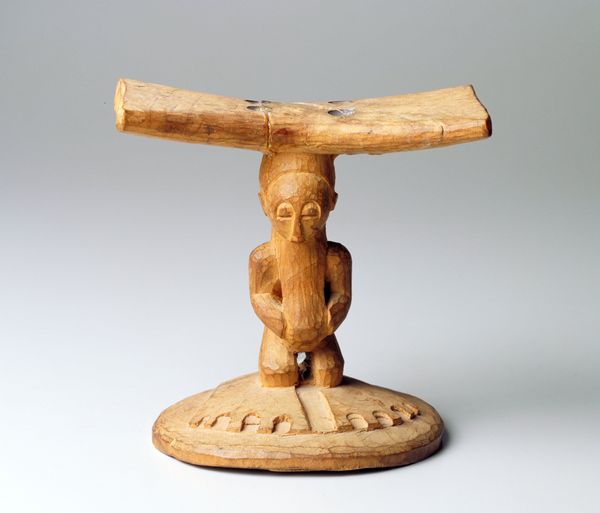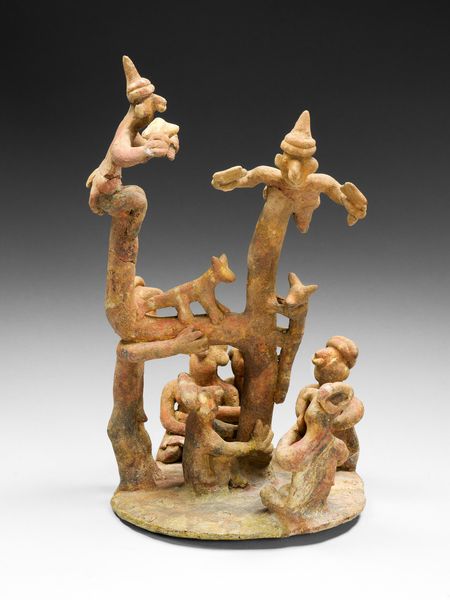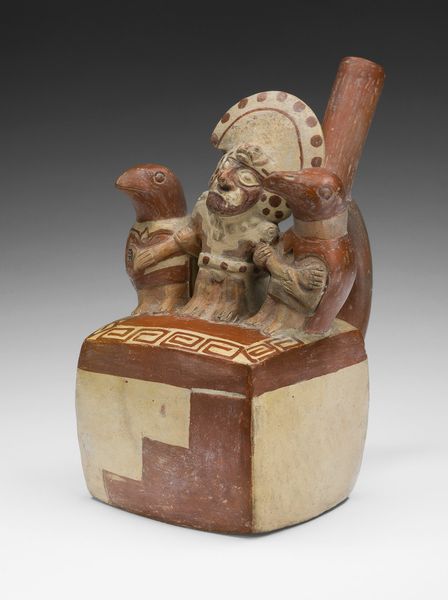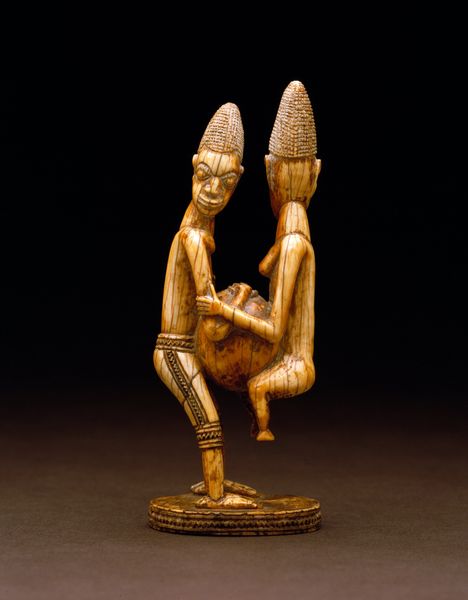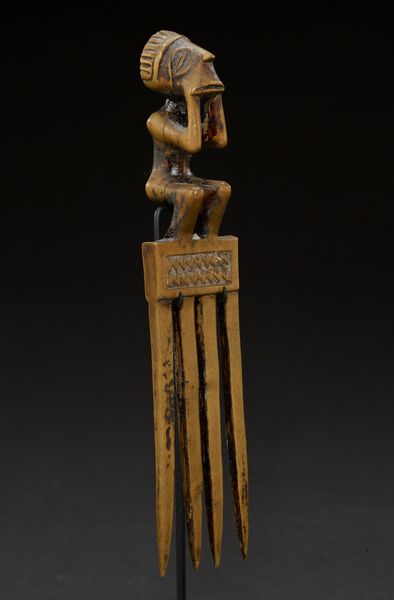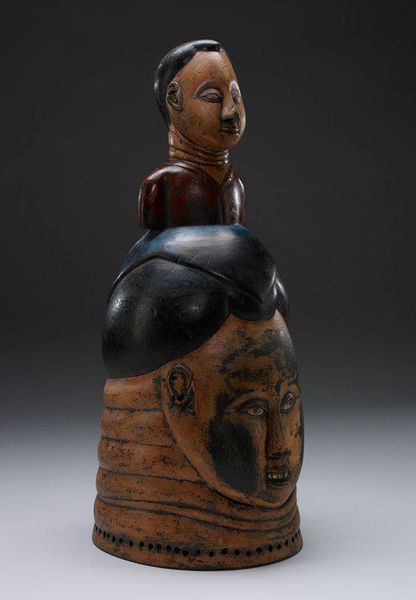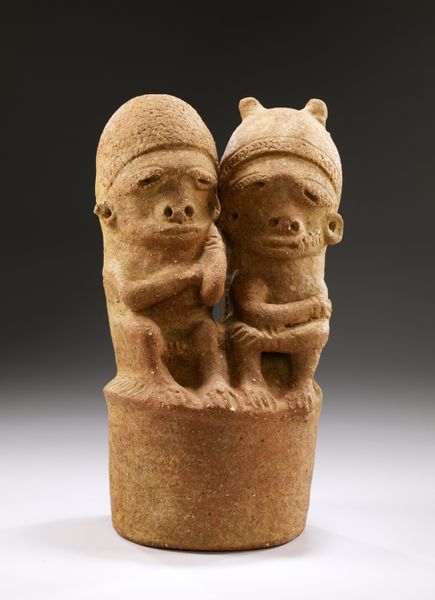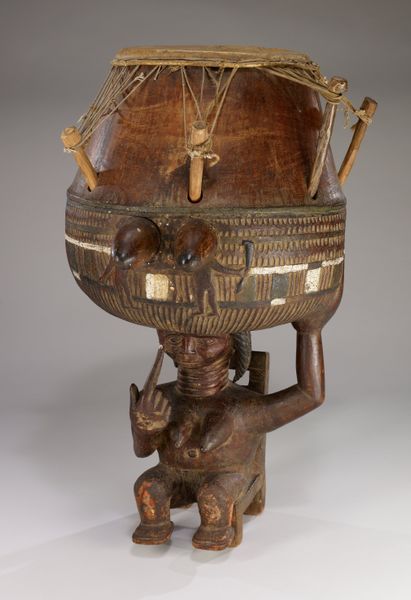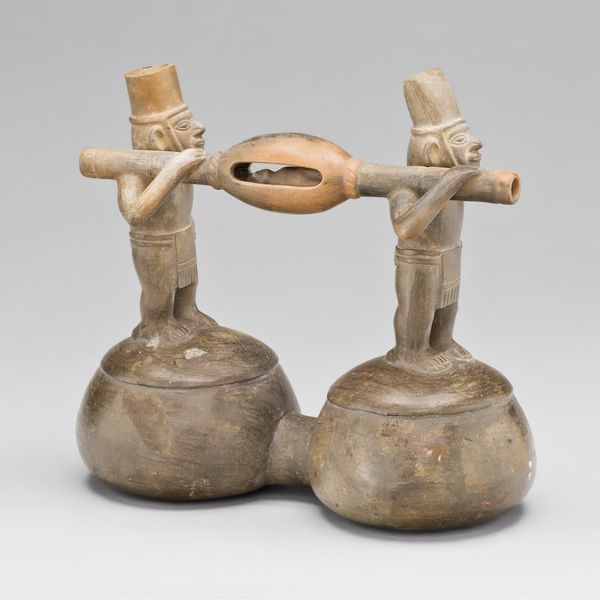
carving, sculpture, wood
#
portrait
#
african-art
#
carving
#
sculpture
#
figuration
#
sculpture
#
wood
#
yoruba-art
Dimensions: 6 1/2 x 4 3/4 x 3 1/4 in. (16.5 x 12.1 x 8.3 cm)
Copyright: Public Domain
Curator: Let's spend a moment contemplating this carved wooden headrest from the Luba people, created around 1880, currently residing at the Minneapolis Institute of Art. Editor: It's quite beautiful, there is something so human and delicate in how the figures are embracing the headrest itself. It almost seems like an offering of comfort. Curator: Exactly, it exemplifies the integration of the human form with functional objects in Luba art. Consider the labour: this headrest would have been fashioned by skilled hands, carving dense wood, not merely a utilitarian object but an item of prestige. Editor: Absolutely, you can see how it becomes an emblem. I love how the figures act as support, it feels symbolic, like ancestral figures watching over one’s sleep. It’s not just something functional, but also deeply spiritual. What about the materials? Are the beads significant? Curator: Certainly. Wood as a primary material links it directly to the natural environment, underscoring a connection to the earth and its resources. The red beads—glass, perhaps obtained through trade—could denote status, incorporating elements of a global exchange into local craftsmanship. And let’s think about consumption: owning this piece meant access to trade networks, affirming a specific social standing within the Luba community. Editor: That adds such a new layer of meaning, the material culture woven into the form. This intertwining makes me appreciate even more its intimate scale. You could hold a story of trade and identity right in the palm of your hand. There's a lovely tension between form and function. Curator: Precisely. We observe not merely an object, but a nexus of production, trade, skill, and symbolic language, which makes "Headrest" a significant focal point for discussions surrounding material culture. Editor: Looking at the soft wood grain gives such a feeling of serenity. Thanks to you, my mind will rest on this amazing piece. Curator: It invites reflection. These artifacts transmit so many nuances. I leave our listeners to think further about this synthesis between the practical, aesthetic and the spiritual world.
Comments
minneapolisinstituteofart about 2 years ago
⋮
Like the larger stools, Luba headrests with female figures are symbolically powerful objects associated with chiefs. The two figures represent Luba matrilineal ancestors who are the literal and figurative support of the hereditary chiefs. The embracing women also reference the importance of family unity and continuity.
Join the conversation
Join millions of artists and users on Artera today and experience the ultimate creative platform.
